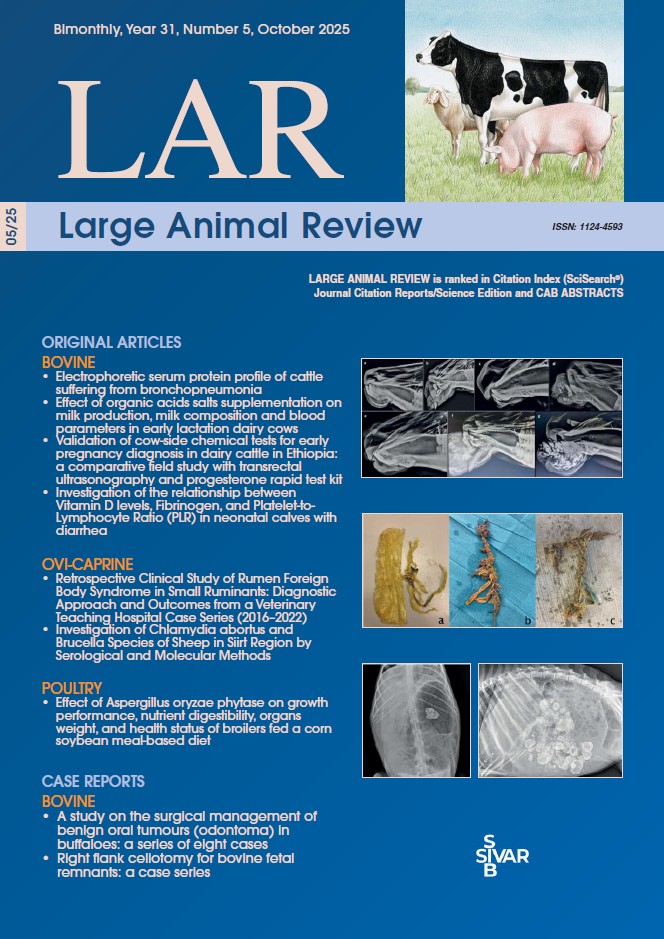Investigation of the Relationship Between Vitamin D Levels, Fibrinogen, and Platelet-to-Lymphocyte Ratio (PLR) in Neonatal Calves with Diarrhea
Vitamin D, Fibrinogen, and PLR in Neonatal Diarrhea
Abstract
Neonatal calf diarrhoea (NCD) causes significant economic losses due to high mortality rates and growth retardation, with both infectious and non-infectious factors playing a role in its etiology. Biomarkers such as vitamin D, fibrinogen, and platelet-to-lymphocyte ratio (PLR) are important in inflammatory processes, with low vitamin D levels being associated with both acute and chronic disease states. This study aims to determine the relationship between vitamin D levels, fibrinogen, and PLR values, evaluating their potential diagnostic and prognostic utility in calves with neonatal diarrhoea, offering the possibility of identifying new, non-invasive tools for detecting non-infectious diseases. The study involved 80 diarrhoeic and 20 healthy Holstein calves, with clinical evaluations performed to assess dehydration status, vital parameters, and hematological profiles. Blood samples from both groups were analyzed for platelet-to-lymphocyte ratio, 25-hydroxyvitamin D3, and fibrinogen levels. The study found lower vitamin D and higher fibrinogen levels in infected calves. Pathogen-specific differences were observed, with lower vitamin D and higher fibrinogen in Cryptosporidium sp. and E. coli-Cryptosporidium sp. co-infections, and rotavirus infection linked to thrombocytopenia and lower PLR. PLR showed the highest diagnostic accuracy in Giardia and Cryptosporidium co-infections. This study highlighted the role of vitamin D deficiency, fibrinogen concentration, and the PLR index in modulating immune responses and inflammation in neonatal calf diarrhoea, suggesting that PLR could serve as a valuable biomarker for assessing inflammation severity in field conditions, with further research needed to confirm its clinical applicability.


